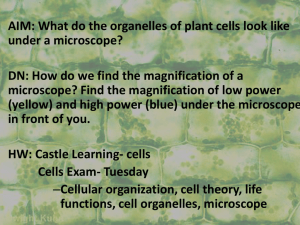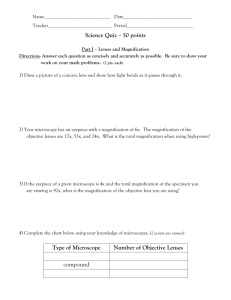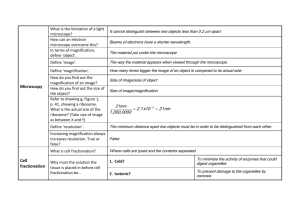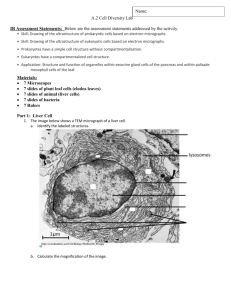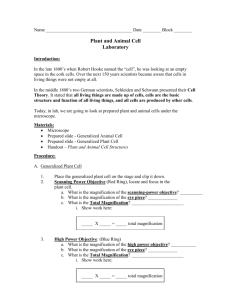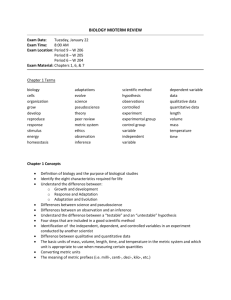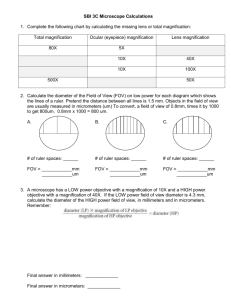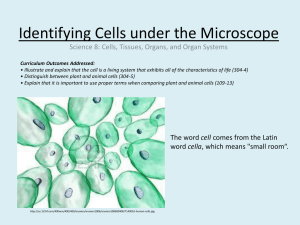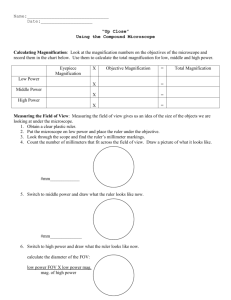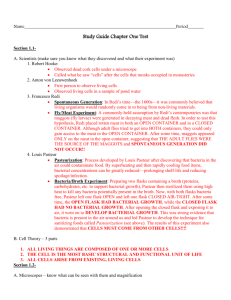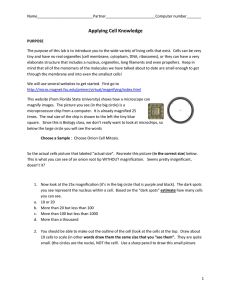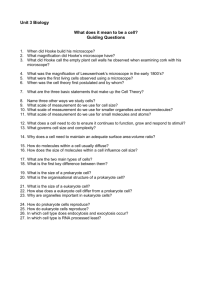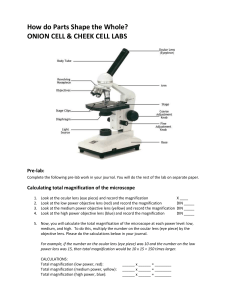Types of Microscopes Comparison Chart
advertisement
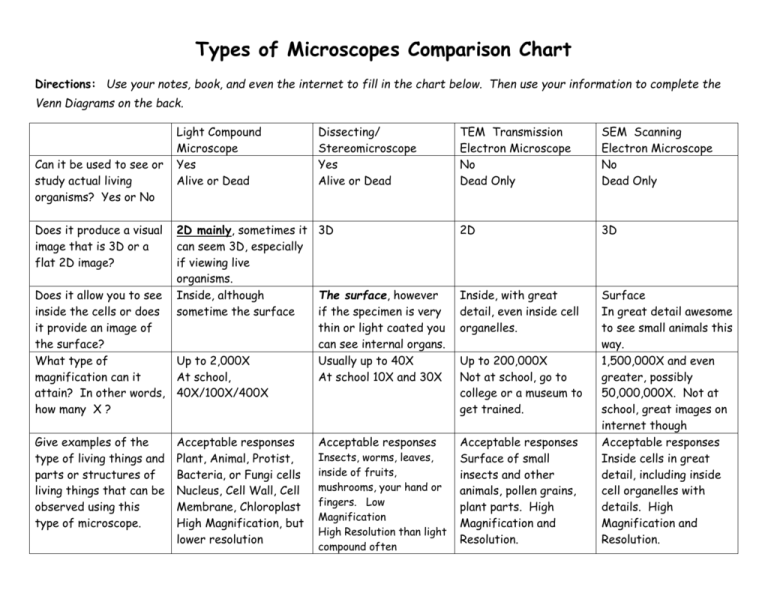
Types of Microscopes Comparison Chart Directions: Use your notes, book, and even the internet to fill in the chart below. Then use your information to complete the Venn Diagrams on the back. TEM Transmission Electron Microscope No Dead Only SEM Scanning Electron Microscope No Dead Only 2D mainly, sometimes it 3D can seem 3D, especially if viewing live organisms. The surface, however Does it allow you to see Inside, although inside the cells or does sometime the surface if the specimen is very it provide an image of thin or light coated you the surface? can see internal organs. What type of Up to 2,000X Usually up to 40X magnification can it At school, At school 10X and 30X attain? In other words, 40X/100X/400X how many X ? 2D 3D Inside, with great detail, even inside cell organelles. Give examples of the type of living things and parts or structures of living things that can be observed using this type of microscope. Acceptable responses Surface of small insects and other animals, pollen grains, plant parts. High Magnification and Resolution. Surface In great detail awesome to see small animals this way. 1,500,000X and even greater, possibly 50,000,000X. Not at school, great images on internet though Acceptable responses Inside cells in great detail, including inside cell organelles with details. High Magnification and Resolution. Can it be used to see or study actual living organisms? Yes or No Light Compound Microscope Yes Alive or Dead Dissecting/ Stereomicroscope Yes Alive or Dead Does it produce a visual image that is 3D or a flat 2D image? Acceptable responses Plant, Animal, Protist, Bacteria, or Fungi cells Nucleus, Cell Wall, Cell Membrane, Chloroplast High Magnification, but lower resolution Acceptable responses Insects, worms, leaves, inside of fruits, mushrooms, your hand or fingers. Low Magnification High Resolution than light compound often Up to 200,000X Not at school, go to college or a museum to get trained. Light Compound 1. Higher Mag. 2. Lower Resolution 3. See cell organelles 4. See inside or through specimens Scanning SEM TEM



